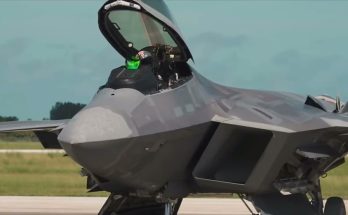The F-22 Raptor, often regarded as one of the most advanced fighter jets ever built, has long been seen as the gold standard of air superiority. However, despite being introduced in 2005 and having faced early retirement rumors, the U.S. Air Force (USAF) has recently signaled that it intends to maximize the jet’s capabilities rather than retire it. This decision to continue enhancing the F-22 has surprised many and underscores the importance of this fifth-generation fighter in maintaining air dominance well into the future.
Why Keep the F-22?
The F-22 was designed with the mission of achieving air superiority by dominating enemy airspace with unmatched stealth, speed, and agility. However, the aircraft has always had a limited production run, with only 187 units built, partly due to its high cost. Over the years, various advancements in air defense technology and newer fighter jets, including the F-35, have led some to question the F-22’s relevance as the Air Force increasingly focuses on next-generation platforms.
Despite these concerns, the USAF has chosen to invest in keeping the F-22 operational for the foreseeable future. Several factors have contributed to this decision: the F-22’s unparalleled performance, its technological potential, and the high cost of replacing it with newer aircraft.
Maximizing the F-22’s Potential
One of the primary reasons the F-22 is not being retired is its ability to undergo continuous upgrades. Over the years, the F-22 has already seen improvements in software, avionics, and weapons systems, making it even more effective in combat. The Air Force has also been focusing on enhancing the F-22’s data-sharing capabilities, enabling the jet to seamlessly integrate into modern multi-domain operations. This allows it to share information with other platforms, such as the F-35, unmanned aerial systems, and ground-based command centers, creating a networked fighting force that can outmaneuver and outthink adversaries.
Additionally, the F-22’s stealth capabilities have been consistently refined to stay ahead of evolving air defense systems. Its radar-evading design makes it difficult to detect and engage, which is a crucial advantage in contested airspace. The Raptor’s radar cross-section remains one of the smallest of any fighter jet, which, combined with its high speed and agility, makes it a lethal force in aerial combat.
New Technologies and Combat Roles
Perhaps the most exciting aspect of the F-22’s future is its potential for incorporating new technologies and evolving combat roles. The Air Force has been integrating advanced weapons systems into the F-22, including new air-to-air and air-to-ground munitions. This increases the jet’s versatility, enabling it to take on a broader range of missions, from precision strike to countering advanced enemy aircraft.
Furthermore, the F-22 is being eyed for more “multi-role” capabilities, including improved electronic warfare systems. The aircraft’s sophisticated sensors allow it to perform intelligence, surveillance, and reconnaissance (ISR) missions, which has the potential to make it a more integrated asset in the U.S. military’s broader strategic framework. With new upgrades, the F-22 could potentially handle both air superiority and strike missions, adapting to the evolving nature of warfare.
A Complement to Future Aircraft
While the USAF has committed to enhancing the F-22, this does not mean the aircraft is expected to remain the cornerstone of air combat indefinitely. Instead, the F-22 will serve as a critical complement to the upcoming sixth-generation fighter, such as the Next Generation Air Dominance (NGAD) program, and the stealthy B-21 Raider. The Air Force envisions the F-22 working in tandem with these newer platforms, leveraging its proven capabilities in a multi-layered, technologically advanced combat environment.
Conclusion
Far from nearing retirement, the F-22 is poised for an extended and upgraded service life. The decision to continue improving the Raptor reflects its irreplaceable value in air superiority and its adaptability in a rapidly changing technological landscape. With enhancements in stealth, avionics, weapons systems, and data-sharing capabilities, the F-22 will remain a formidable force for the U.S. Air Force, capable of defending against future threats while setting the stage for the next generation of fighter aircraft. Rather than retiring the F-22, the USAF is choosing to maximize its potential and ensure that it continues to dominate the skies for years to come.



